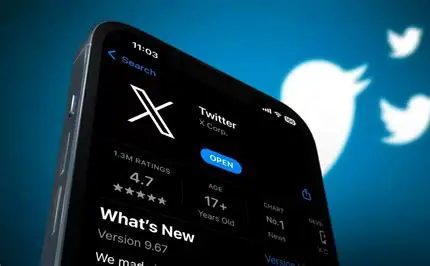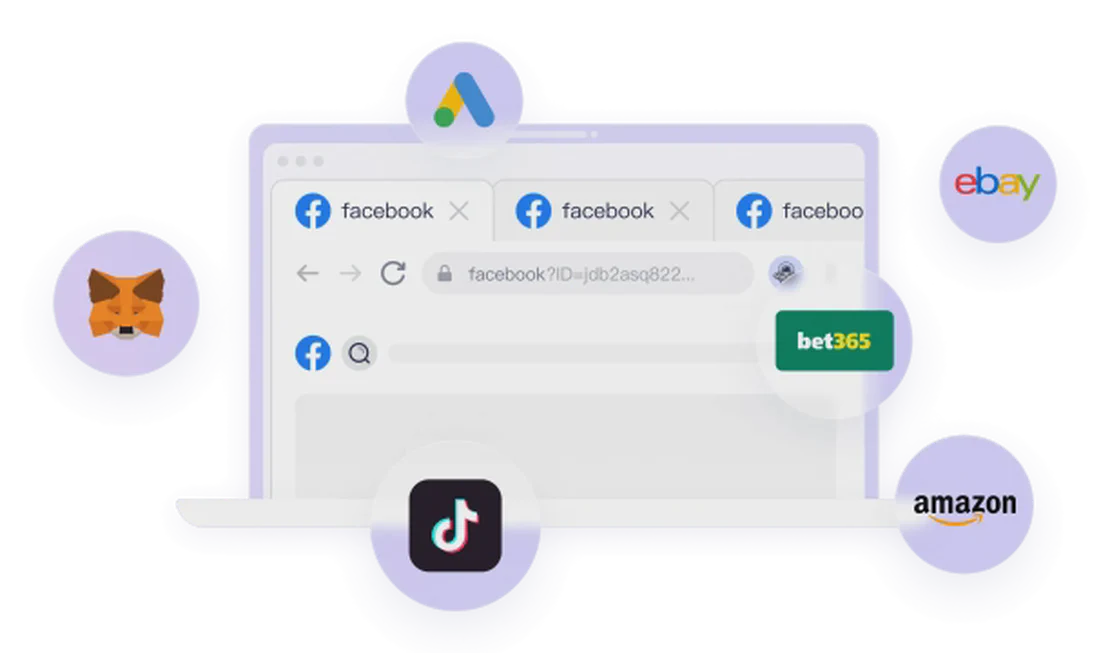Have you ever had this feeling? Scrolling through Twitter late at night, you’re confronted with an endless stream of debate. The noise is deafening, and the clashes are fierce, yet you feel a profound sense of cold and isolation. These seemingly heated discussions lack the depth and warmth characteristic of human interaction. It’s less like a conversation and more like actors rehearsing a pre-written script, with hollow lines and a lack of genuine listening. It’s as if you haven’t entered a digital plaza, but an empty theater where the audience has long since “left,” leaving only the echoes of code-driven performances.
This is the portrait painted by the “Dead Internet Theory” (DIT): a cyberspace populated by automated bots and AI-generated content, designed to manipulate public perception and shape discourse. While this may sound like a plotline from a sci-fi novel, when we look at today’s Twitter, this reality seems to be approaching at an alarming pace.
Twitter was once famous for its unique “beauty of chaos.” Here, politics, media, and even arguments about arguing itself could evolve into a gladiatorial arena where everyone participated, feeding a primal urge for conflict. It seems people came to Twitter because they had “nothing else to be upset about,” immersing themselves in what felt like a grand “culture war.” Yet, the reality of this war was long ago debunked by data: 92% of tweets come from only about 10% of accounts, making it the very definition of an echo chamber, with an influence that pales in comparison to Facebook’s 3 billion monthly active users.
But what truly caused Twitter to “die” and fall under the shadow of the “Dead Internet” was the series of disruptive changes implemented after Elon Musk’s takeover, particularly the commercialization of the “blue check” verification system.

The “Blue Check”: The Birth of a Paid Privilege and an Algorithmic Class
Before Musk, the blue checkmark was a hard-earned, official symbol of identity verification, used to protect notable figures from impersonation. Though the process was convoluted, it was at least a verification based on “influence.”
Musk’s reform completely overturned this logic. He turned the blue check into a perk for subscribing to X Premium (formerly Twitter Blue), available for just $8 a month. This led to two disastrous consequences:
1. The Collapse of Trust and the Fragmentation of Society: The “blue check” devolved from a symbol of credibility into a subtle insult. It was no longer linked to status or authenticity, but instead associated with a group of paying subscribers often depicted as out-of-touch tech bros obsessing over crypto and NFTs. “Blue check” became almost synonymous with “NPC” (Non-Player Character), representing those programmed and thoughtless “bots.” Ironically, this feature, originally intended to fight spam and bots, gave them a legitimate “ID card” for a mere $8, making them more visible and ubiquitous than ever before.
2. The Consolidation of an Algorithmic Class: The most overlooked, yet most impactful, change was that paying accounts were given greater weight in the algorithm and priority in replies. This means a comment from a “blue check” user is naturally prioritized and gets more visibility than that of an ordinary user. When you scroll through the replies to any Musk post and see an army of comments formatted with repeated phrases and double emojis, what you’re seeing could be real paid users, highly automated bots, or even real people “acting out” to appease the algorithm.
Whatever they are, they have formed a new algorithmic class whose voices are disproportionately amplified, while the genuine discussions of regular users are drowned out at the bottom. This virtual class, shaped by a payment mechanism and algorithmic bias, is the concrete manifestation of the “Dead Internet Theory” on Twitter.
The Infiltration of AI: From Grok to Ghosts in the Comments
If the “blue check” provided the “uniforms” for the zombie army, the launch of Grok—Twitter’s native AI chatbot—was another layer of algorithmic fog cast over the entire platform. Like Google’s AI Overviews, Grok’s arrival wasn’t about delivering a superior service, but more of an “All-in” strategy, an awkwardly timed move to conform to a trend.
It plays a peculiar role in the comment section. When you encounter a meme or a joke you don’t understand, your instinct might be to seek clarification. But on Twitter, a growing number of people’s first reaction is: @Grock, is this true?
This mechanical questioning has become a performance in itself. It masks the user’s true intent—whether genuine curiosity or simply piggybacking on the extra engagement that an AI reply can generate. To interact with the AI, users begin to behave like bots. This creates a bizarre feedback loop: AI makes people act more like robots, and robotic behavior further blurs the line with AI. When you see “Grok, is this true?” in the comments, there’s no immediate way to tell if you’re facing a curious individual or an automated program trained to trigger on that specific command.

How to Reclaim Your Humanity in a Zombie-Infested Digital World?
Faced with a Twitter flooded by “blue check” bots, AI-powered chat interfaces, and content farms (posting irrelevant content to hijack traffic from viral posts), genuine human users seem to have become an endangered species. How can we, in this world of illusion driven by algorithms, economic incentives, and code, re-establish the independence of our identity and the authenticity of our discourse?
The answer may not lie in fighting the system, but in understanding it and using technical tools to protect our “digital persona” as individuals. This is precisely the ultimate challenge we face when managing multiple social media accounts, and it’s the deep reason why tools like FlashID exist.
Imagine a digital marketing expert who needs to operate multiple accounts on Twitter simultaneously:
- Account A: Their personal brand account, sharing professional insights.
- Account B: A customer service account, engaging with followers.
- Account C: An “insights” account for monitoring competitor trends.
In the past, this would have required complex and unstable methods like browser extensions or virtual machines to isolate the environments for these three accounts. However, as Twitter increasingly becomes a dual-filter platform of “algorithm + paid verification,” any minor similarity in environmental fingerprints (like device info, IP address, browser characteristics) can be flagged by the algorithm as “associated accounts.”
Once associated, the consequences could be severe: algorithmic demotion, causing Account A’s professional content to lose normal visibility; batch throttling, rendering Account B’s customer service function useless; and in the worst-case scenario, account suspension, abruptly halting the market intelligence work of Account C.
FlashID Anti-Detect Browser is designed to address this harsh reality of “digital identity politics.” It provides a completely isolated, independent virtual browsing environment for each account. On your single physical device, when you launch FlashID and log into Account A, Twitter sees a clean user IP and device fingerprint from, say, the United States. When you switch to Account B, it sees a user from, for instance, Europe. In the platform’s database, these two accounts are as unrelated as two completely separate individuals browsing the internet from different corners of the world.
This means that even in the virtual world of Twitter, filled with “blue check” classes and AI echoes, you can still securely and autonomously manage your multiple digital identities without fear of being incorrectly categorized or penalized by the system due to technical “association.” It protects your personal brand, your business activities, allowing you to operate your digital assets effectively and professionally without having to “perform” or “imitate bots” to meet the platform’s demands.
Twitter may be dead, or perhaps it has merely become a more sophisticated illusion, meticulously orchestrated by code and capital. But as real humans, we still need to exist, communicate, and even conduct business within this complex arena. And FlashID is the invisibility cloak we don before entering this “zombie theater,” allowing us to use our independent digital identities to make a genuine voice heard amidst the clamor of illusions.
Frequently Asked Questions (FAQ)
Q: Is the “Dead Internet Theory” just a conspiracy theory?
A: While DIT is labeled as a conspiracy theory, the phenomenon it describes—the proliferation of AI and automated content on social media—is a visible reality. Rather than seeing it as an organized “plan,” it’s more accurate to view it as a systemic trend driven by technology, business algorithms, and human behavior.
Q: Why does Twitter feel more ‘fake’ and isolating than before?
A: There are two main reasons: The Generalization of “Blue Check” Verification: Paid verification is no longer a symbol of credibility but a ticket to an algorithmic class, causing the voices of paying accounts to be disproportionately amplified, drowning out discussions from ordinary users. AI Intervention: The prevalence of AI tools like Grok in the comments has made a mechanical, “AI-style” interaction the norm, reducing the warmth of human communication.
Q: How can I tell if a Twitter account is a real person or a bot?
A: Watch out for red flags: Does the message lack genuine intent? Is it “posted for the sake of posting”? Are repetitive emojis or meaningless words used? Does the profile picture and name look too “perfect” or “template-like”? Although advanced bots are becoming harder to distinguish, these signs remain important clues.
Q: Besides Twitter, do other platforms (like Facebook, Instagram) have similar problems?
A: Yes. Facebook is overrun with AI-generated images and misinformation, and Instagram’s Reels are filled with “garbage” AI content. Twitter, due to its unique “blue check” system and amplified algorithmic conflict, exhibits the symptoms of the “Dead Internet” more prominently and typically, but this is a problem plaguing the entire internet.
Q: What is the specific impact of “Blue Check” verification on an account’s algorithmic weight?
A: Based on the video content and common user observations, verified (blue check) accounts are given higher priority in the algorithm. This means their posts, comments, and likes have a greater chance of being recommended and are more likely to appear at the top of replies to popular tweets.
Q: What is a “Content Farm”? How do they affect the Twitter experience?
A: Content farms are organizations that create large volumes of low-quality, repetitive content to generate traffic and ad revenue. On Twitter, they often post links to unrelated videos in the comment sections of popular posts, a tactic designed to drive traffic to their own accounts. This practice drowns out discussions from genuine users and undermines the community’s communication atmosphere.
Q: Does the AI tool Grok have any positive impact on Twitter?
A: By design, Grok can act as a “built-in search engine” to quickly answer user questions. It can also leverage the “Community Notes” feature for fact-checking, helping to combat misinformation to some extent. However, its mode of use (e.g., frequently asking “@Grok, is this true?”) has also spawned new, mechanical patterns of interaction.
Q: Can user-driven mechanisms like “Community Notes” counter the flood of AI and bots?
A: “Community Notes” is an effective “band-aid” solution that relies on millions of contributors to label inaccuracies in real-time. In the long run, however, it’s in a constant “chase” mode and needs to be “reapplied” continuously because the speed and scale of automated content generation are constantly increasing. Therefore, it may not be a permanent fix.
Q: Besides Twitter marketing, can FlashID be useful on other AI-or bot-infested platforms?
A: Absolutely. Any scenario requiring multi-account matrix operations can face the risk of account association. For example, managing numerous affiliate promotion links across the web, running social media marketing on Facebook/Instagram/TikTok, or managing multiple e-commerce stores are all situations where FlashID can provide a secure, isolated environment to prevent your accounts from being flagged as related due to identical environmental fingerprints.
Q: What is the special value of the RPA automation function in this “AI-dominated” environment?
A: When everyone around you is “performing,” high-quality automation can allow you to handle repetitive tasks more efficiently, freeing up human energy for creative and strategic content. For instance, using RPA to automatically execute tasks like following, liking, and commenting can save significant time, allowing you to focus on planning in-depth interactions instead of becoming a mimic of an algorithmic machine.
You May Also Like
